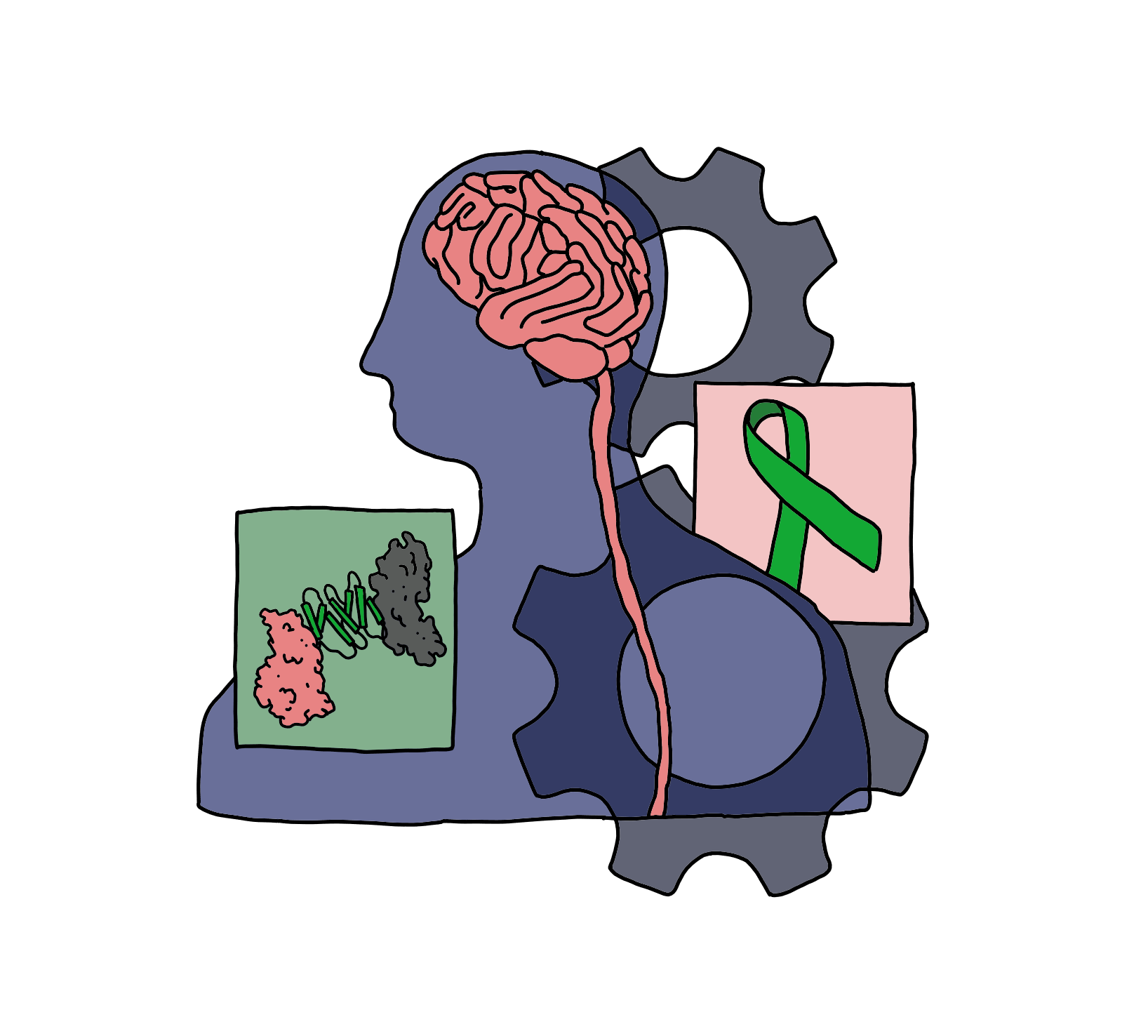
Anasthasia Shilov, Illustrations Editor
A newly published Yale study compared the immune system cells of people with multiple sclerosis, or MS, and those of healthy individuals. The scientists found that immune cells may play an important role in an individual’s mental well-being.
Researchers at the Hafler Lab — run by Professor of Neurology David Hafler — used a new technology called single cell RNA sequencing to study the immune cells known as T cells present in the spinal fluid of healthy people and those with MS. Their results provide an in-depth picture of what a normal immune system looks like, which will allow researchers to better understand autoimmune diseases and investigate the link between immunology and psychiatric disorders such as depression and anxiety. The study, first authored by graduate student Jenna Pappalardo YSM ’20, was published in Science Immunology on Sept. 18.
“The breakthrough in the study is a new technology called single cell RNA sequencing,” Hafler said. “What it allows one to do is take each individual cell, and to sequence very deeply without bias to see what’s actually there, what the function is. We’ve never been able to do that before.”
The Hafler Lab studies the molecular mechanisms behind MS, which is an inflammatory disease of the central nervous system characterized by immune cells attacking the outer coating of neurons. Their recent study aimed to compare the genetic profile of T cells in people with and without MS. In order to understand MS, they first needed to get a comprehensive cellular profile of a healthy immune system.
The study took place over the course of five years, with the most important data collection occurring in the last two years, according to Le Zhang, assistant professor of neurology at the School of Medicine and an author of the paper. In order to obtain samples of normal immune system cells, healthy graduate students and junior faculty who were at the age of MS patients volunteered to undergo spinal taps.
The cerebrospinal fluid cells were then analyzed using single cell RNA sequencing. Traditional sequencing techniques require millions of cells in order to be carried out. However, the development of single cell RNA sequencing means that the 10,000 cells retrieved from a typical spinal tap are enough.
“The advantage of [single cell RNA sequencing] is that nowadays people can sequence at the single cell level to gather the transcriptomics of each of the individual cells in parallel at a low cost,” Zhang said.
As expected, the spinal fluid of patients with MS contained highly activated cytotoxic “killer” T cells. Surprisingly, however, the sequencing results revealed that many of the T cells in the healthy spinal fluid were also activated, meaning they too were poised to make an inflammatory response.
According to Hafler, the normal spinal fluid had an inflamed signature containing gamma interferons, which are secreted by immune cells and associated with fighting off bacteria and regulating a variety of immune system responses.
The cellular profile of MS that Pappalardo’s study outlined may be able to aid in identifying people who are at risk for the disease early on.
“We already know that treating MS at its earliest stages leads to better clinical outcomes,” Erin Longbrake, professor of neurology and director of the MS fellowship program at the School of Medicine, wrote in an email to the News. “If the disease could be identified and treated even before it really starts, perhaps that would really lead to a cure in those patients.”
The discovery of the presence of activated T cells and gamma interferons even in normal spinal fluid also reveals a potential link between T cells and psychiatric disorders.
Studies performed on mice show that when gamma interferons are blocked, the mice develop psychiatric problems like depression and anxiety. This suggests that the gamma interferons being made in normal spinal fluid might play an important role in maintaining biological function in the brain.
“We’re going to hopefully begin working with the Department of Psychiatry and see if young people who get severe depression have alterations in their immune systems, and the hypothesis is that they lose the gamma interferon signature,” said Hafler.
A previous study conducted at Emory University by Professor of Psychiatry Andrew Miller, investigated the use of anti-inflammatory drugs for treating depression and found no effect overall, according to Gerard Sanacora, director of the Yale Depression Research Program.
However, further analysis of the data revealed that people with higher levels of neuroinflammation actually tended to have better psychiatric outcomes with the immunotherapy treatment, while other patients with lower amounts of inflammation sometimes got worse.
“While neuroinflammation may be a component of the pathophysiology of depression for some people … it’s not for everybody,” Sanacora said. “So if you can identify the people more likely to benefit using the tools highlighted in this paper, we’d be able to specifically target these treatments.”
This study was primarily funded by the National Institutes of Health and the National Multiple Sclerosis Society.
Jenny Mao | jenny.mao@yale.edu







